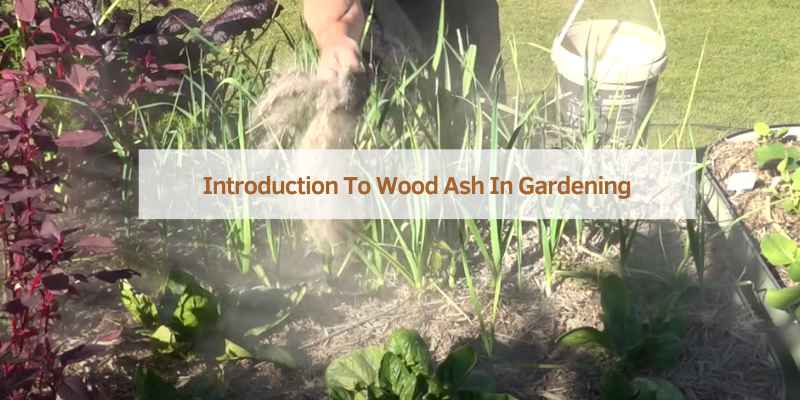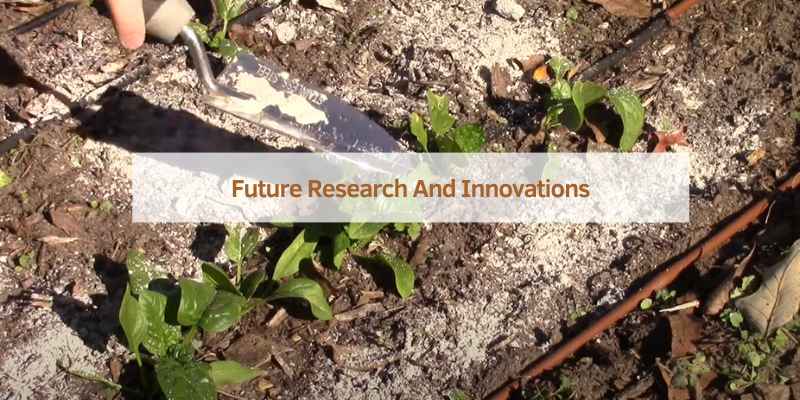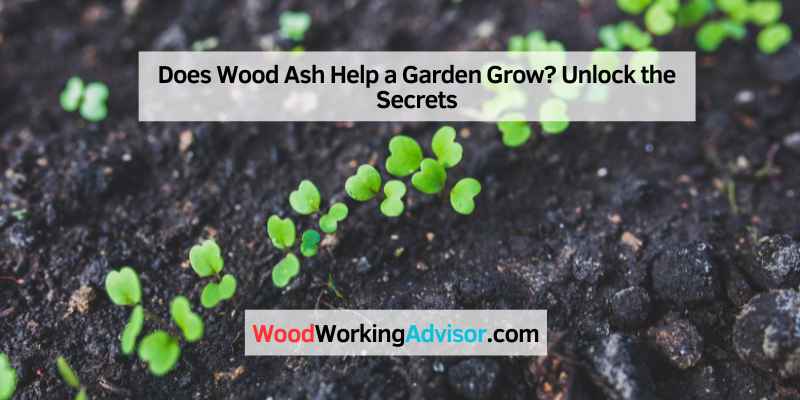Yes, wood ash can benefit a garden. It adds essential nutrients like potassium and calcium to the soil.
Wood ash, a byproduct of burning wood, contains valuable nutrients for plant growth. It is particularly rich in potassium, which helps strengthen plant roots and improve overall health. Calcium in wood ash helps neutralize acidic soil, making it more favorable for many plants.
Sprinkle wood ash lightly around your garden to reap its benefits. Avoid using it around acid-loving plants like blueberries. Too much wood ash can raise soil pH excessively. Always test your soil before adding wood ash. Use it in moderation to maintain a balanced nutrient profile. Wood ash offers an eco-friendly way to recycle waste and enhance your garden’s productivity.
Introduction To Wood Ash In Gardening
People have used wood ash in gardens for many years. It was a common practice long ago. Farmers would spread ash on their fields. This helped to improve the soil. Wood ash contains important nutrients. These nutrients are good for plants.
Today, many gardeners still use wood ash. It is a natural fertilizer. Wood ash can help balance soil pH. It is also rich in potassium. Potassium helps plants grow strong. Some gardeners use it to repel pests. Ash can keep slugs and snails away. It is also used in composting.

Chemical Composition Of Wood Ash
Wood ash contains many key minerals. Potassium is one of the most important. It helps plants grow strong roots. Calcium in ash makes the soil less acidic. Magnesium is also present and helps in photosynthesis. There is also phosphorus which aids in flower and fruit development.
Different woods produce different ash. Hardwoods like oak have more nutrients. Softwoods like pine have fewer minerals. The type of wood used impacts the ash quality. Some woods have more calcium and potassium. Others may have more magnesium.
Benefits Of Wood Ash For Soil Health
Wood ash can help change soil pH levels. It makes acidic soil more neutral. This helps plants grow better. Different plants prefer different pH levels. Wood ash can help balance this. Always test your soil before adding wood ash. Too much can harm your plants.
Wood ash adds nutrients to the soil. It provides calcium, potassium, and magnesium. These are essential for plant growth. Wood ash does not contain nitrogen. You may need to add nitrogen separately. Use wood ash sparingly for best results. Mix it well into the soil.
Impact On Plant Growth
Wood ash contains nutrients that plants need. It adds potassium and calcium to the soil. These nutrients help plants grow better. Wood ash can make the soil less acidic. This helps plants take in more nutrients. Many farmers see more fruits and vegetables. They get better crop yields after using wood ash.
Wood ash helps plants fight diseases. It has important elements like potassium. Potassium makes plants stronger. Strong plants can resist pests and diseases. Wood ash also helps balance soil pH. Balanced soil makes plants healthier. Healthier plants are less likely to get sick. Many gardeners use wood ash to keep their plants safe.
Wood Ash As A Pest Deterrent
Wood ash effectively deters pests and enriches the soil with essential nutrients. Sprinkling it around plants can help maintain a healthy garden environment.
Common Garden Pests
Wood ash can help keep pests away. It works well against slugs and snails. Sprinkle ash around plants. It creates a barrier they avoid. Wood ash can also deter ants. Spread it around ant hills to keep them away.
Effective Usage Of Ash
Use wood ash in small amounts. Too much can harm plants. Mix ash with compost for best results. This way, plants get nutrients slowly. Avoid using ash on acid-loving plants. It can make the soil too alkaline. Store ash in a dry place. Wet ash is not effective for pest control.
Application Methods For Wood Ash
Wood ash enriches garden soil with essential nutrients. It raises pH levels, making acidic soils more alkaline. Proper application ensures balanced plant growth and improved soil health.
Direct Soil Amendment
Wood ash improves soil pH. Spread it thinly on the garden soil. Avoid clumps to prevent damage. Mix ash into the soil gently. Use a garden fork or rake. Wood ash adds potassium and lime. These nutrients help plants grow well. Always test your soil first. Too much ash can harm plants.
Making Wood Ash Tea
Wood ash tea is easy to make. Fill a bucket with water. Add a cup of wood ash. Stir the mixture well. Let it sit for a few days. Stir occasionally. Strain the liquid before use. Use wood ash tea as a foliar spray. Spray it on leaves and stems. This method helps plants absorb nutrients quickly.
Precautions And Best Practices
Wood ash can be helpful in small amounts. Adding too much can harm plants. Always test soil pH before adding ash. Ash is alkaline and can make soil too basic. Spread ash thinly and mix it well into the soil.
Some plants do not like wood ash. Blueberries and azaleas prefer acidic soil. Do not use ash near these plants. Potatoes can also get scab disease from ash. Be careful with ash around these plants.
Environmental Considerations
Sustainably sourced wood is essential for using wood ash in gardens. It’s important to use wood from renewable sources. This helps to protect forests and wildlife habitats. Avoid using wood that has been treated with chemicals. Chemicals can harm the soil and plants.
Wood ash can benefit local ecosystems. It can improve soil health and provide essential nutrients. But, too much wood ash can raise soil pH levels. This can harm plants that need acidic soil. Always test soil pH before adding wood ash.
Comparing Wood Ash With Commercial Fertilizers
Wood ash is often free. It can be collected from your fireplace or stove. Commercial fertilizers can be expensive. They often require repeated purchases. Wood ash contains key nutrients. These include potassium and calcium. Commercial fertilizers may have more balanced nutrients. They are specifically formulated for plants.
Wood ash fits well in organic farming. It is a natural product. Commercial fertilizers are often synthetic. They may contain chemicals. Using wood ash can improve soil pH. It can help reduce soil acidity. Organic farmers prefer natural amendments. This makes wood ash a good choice.
Real-life Case Studies
Gardeners often wonder if wood ash benefits their soil. Real-life case studies reveal its potential to enhance plant growth. Properly applied wood ash can improve soil pH and provide essential nutrients like potassium.
Success Stories
Wood ash can make plants grow better. For example, a gardener from Ohio used wood ash on her tomato plants. Her tomatoes became bigger and juicier. She only used a small amount. Too much can harm plants. Another gardener in Florida used wood ash on his flower beds. His roses bloomed more beautifully. He was very happy with the results. These stories show how wood ash can help a garden.
Lessons Learned From Failures
Sometimes, wood ash can cause problems. A gardener in Texas used too much wood ash. His plants turned yellow and stopped growing. He learned that balance is important. Another gardener in New York used wood ash on acid-loving plants. The plants did not like it. They need a different kind of soil. These failures teach us to be careful. Always test wood ash in a small area first.
Future Research And Innovations
Scientists are studying new ways to use wood ash in gardens. They want to find out the best methods. This research could help plants grow better. Wood ash has many nutrients like potassium and calcium. These nutrients help plants stay healthy. Researchers are testing different types of ash.
They mix ash with soil to see the effects. New technologies may make it easier to spread ash in fields. This could save time and effort for farmers. Eco-friendly methods are also being explored. These methods reduce waste and improve soil quality.
Modern farming techniques can benefit from wood ash. Farmers can use ash as a natural fertilizer. This reduces the need for chemical fertilizers. Smart farming tools help apply ash evenly. Sensors can measure soil nutrients. This ensures the right amount of ash is used.
Drones and robots could also help. They can spread ash quickly over large areas. Combining ash with compost is another idea. This mix can improve soil health. It makes plants grow stronger. Farmers are excited about these new ideas.

Frequently Asked Questions
Which Plants Do Not Like Wood Ash?
Plants that prefer acidic soil don’t like wood ash. Avoid using wood ash on blueberries, azaleas, rhododendrons, and camellias. These plants thrive in low pH environments.
Which Vegetables Like Wood Ash?
Certain vegetables thrive with wood ash, such as tomatoes, carrots, beans, and garlic. Wood ash boosts soil pH and provides potassium.
Can You Put Too Much Wood Ash In Your Garden?
Yes, you can put too much wood ash in your garden. Excess wood ash can raise soil pH too high and harm plants. Use sparingly and test soil pH regularly for best results.
When Should I Add Wood Ash To My Garden?
Add wood ash to your garden in late winter or early spring. Apply it before planting. Ensure the soil pH is below 7. 0.
Conclusion
Wood ash can be a valuable addition to your garden. It enriches soil with essential nutrients. Use it sparingly to avoid imbalances. Always test your soil before applying. Proper use of wood ash can enhance plant growth and soil health.
Embrace this natural resource to boost your garden’s productivity.

